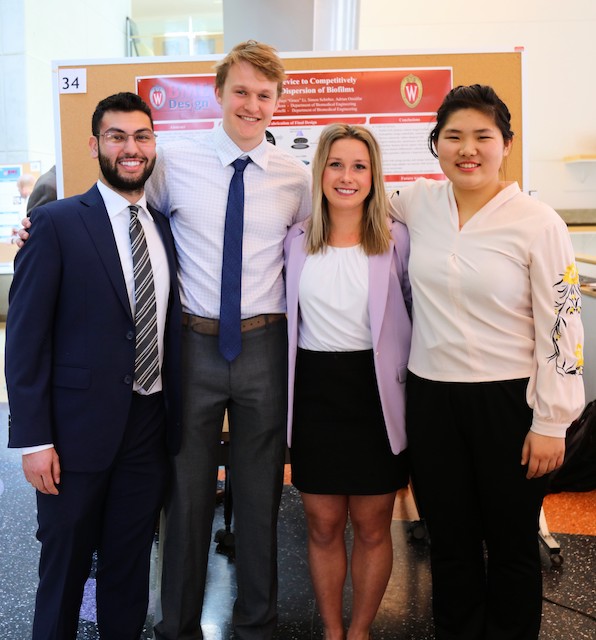Microfluidic device to competitively measure biofilm dispersion potential-Junior
This project has been secured to protect intellectual property.
Login for More InformationDesign Award
- Design Excellence Award Winner
Project Overview
Medical devices often break protective barriers (e.g. skin) and can become a natural conduit for infection, particularly when microbes form biofilms on these devices. Candida yeast species cause 80-90% of these fungal infections and it is estimated that anywhere from 15-50% of patients who develop invasive Candida infections die.
Candida albicans yeast establish biofilms on medical devices by first adhering planktonic cells onto the device. These cells will then initiate biofilm development by becoming hyphal cells and beginning to form an extracellular matrix. As the biofilm matures the hyphal cells can begin to disperse planktonic cells that have increased virulence and adherence compared to freeform planktonic cells. These dispersed cells will then travel through the body creating additional biofilms. Strains of Candida that have decreased ability to disperse cells from biofilms are also less virulent than wildtype. This suggests that dispersion of cells from the biofilm is fatal-not the biofilm itself. However, dispersion has not been as heavily studied as biofilm formation or the extracellular matrix, therefore a pathway leading to dispersion has not been established. An experimental device for comparing the dispersion of different genetically altered strains would be ideal to understand what genes are important in the process.
The goal of this project would be to build a device where multiple biofilms can be grown and their dispersion potential competitively monitored, perhaps under a microscope. For example, a BioMems device could be developed. The device should allow the biofilm to be exposed to different environmental conditions, such as nutrient depletion or antifungal drugs, so that the effect of the environment on biofilm dispersion can be tested. The device should be amenable to miniaturization and parallelization so that many biofilms can be tested at the same time allowing us to assess dispersion in different mutant strains and under different conditions in a medium-throughput manner.
Previous BME design teams have made progress on this device. For this semester, it would be ideal if the design team focuses on making a device that allows quantitation as well as measurement of multiple pathogenic fungal strains simultaneously.
Team Picture

Contact Information
Team Members
- Victoria Trantow - Team Leader
- Adrian Omidfar - Communicator
- Grace Li - BSAC
- Simon Schirber - BWIG & BPAG
Advisor and Client
- Prof. John Puccinelli - Advisor
- Prof. Megan McClean - Client
- Stephanie Geller - Alternate Contact
Related Projects
- Spring 2020: Microfluidic Device to Competitively Measure Biofilm Dispersion Potential
- Fall 2019: Microfluidic device to competitively measure biofilm dispersion potential
- Spring 2019: Microfluidic device to competitively measure biofilm dispersion potential-Junior
- Fall 2018: Microfluidic device to competitively measure biofilm dispersion potential-Junior and Sophomore
- Spring 2017: Device to measure fungal biofilm dispersion
- Fall 2016: Biofilm Dispersion Device
